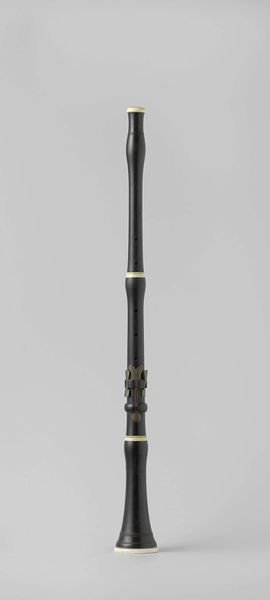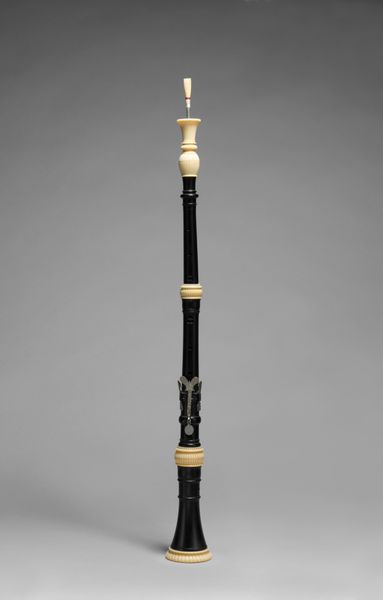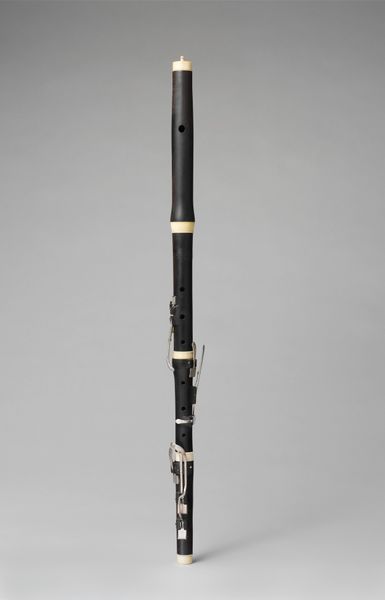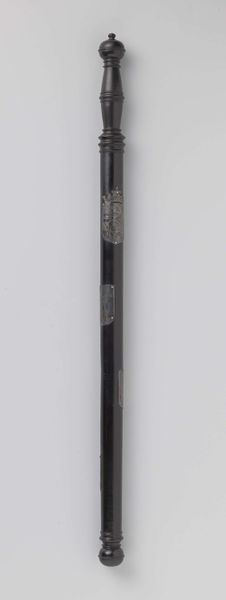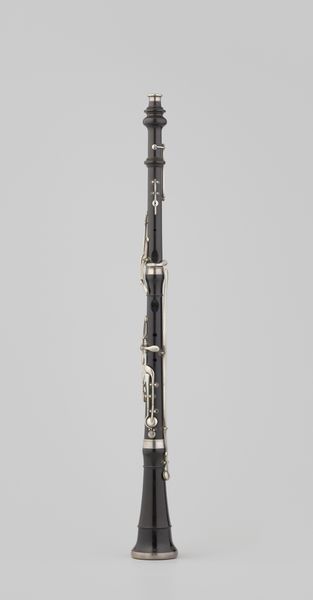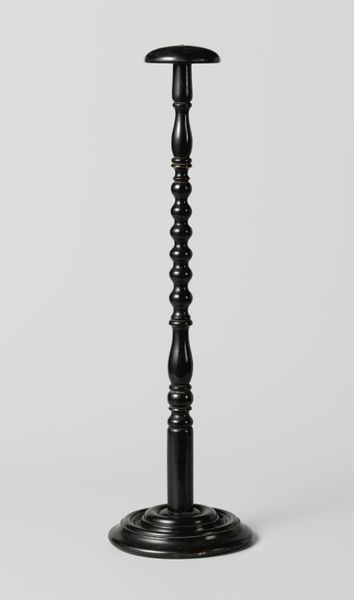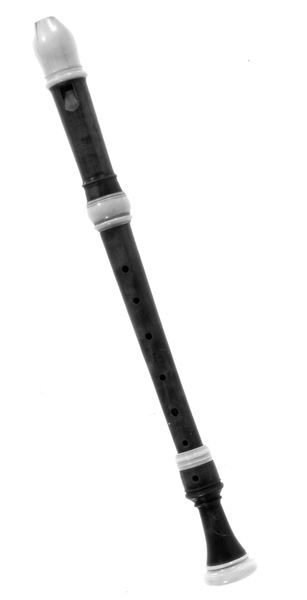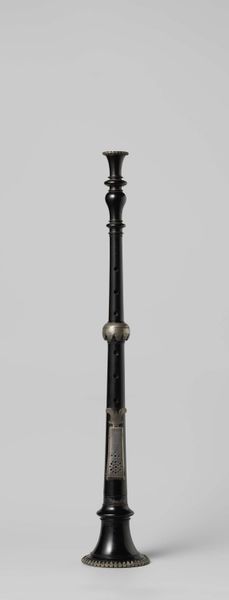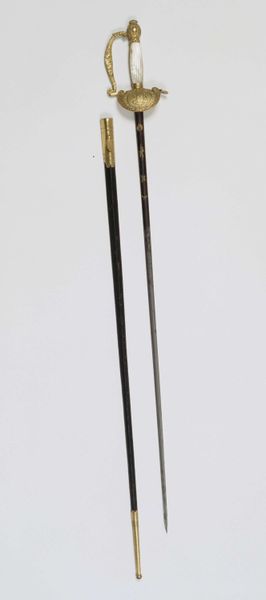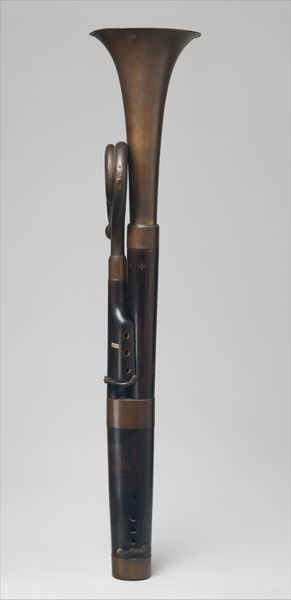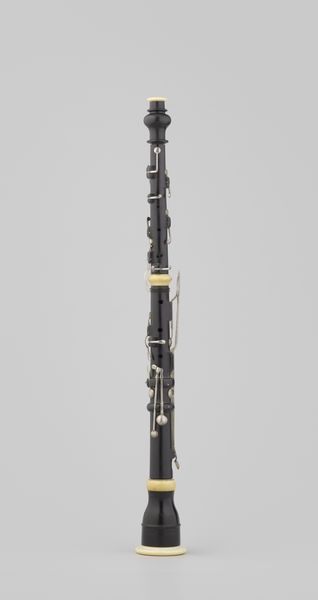
wood
#
baroque
#
wood
#
musical-instrument
Dimensions: 13 1/8 × 1 5/16 × 1 5/16 in. (33.3 × 3.3 × 3.3 cm)
Copyright: Public Domain
Here we see a soprano recorder in B, crafted by Thomas Coenraet Boekhout, probably in the early 18th century. The first impression is one of elegant simplicity: the instrument is a study in contrasts, primarily between the dark, smooth body and the bright ivory accents. This interplay of colour and material serves to highlight the recorder’s form. The structure reveals a clear hierarchy. The mouthpiece, with its bulbous shape, transitions into the main body, a sleek, cylindrical form punctuated by precisely placed finger holes. Note the subtle curves and flares at each end, which give the object a sense of balance and refinement. This attention to detail elevates the recorder beyond a mere functional object. In the context of its time, the recorder represents a moment of cultural and technical refinement. The clear, sweet tone it produces is a testament to the maker's skill, but also reflects the values of a society that prized elegance and precision in both art and life. The recorder then becomes more than just a musical instrument; it is an artifact that speaks to the aesthetic and philosophical ideals of an era.
Comments
No comments
Be the first to comment and join the conversation on the ultimate creative platform.
